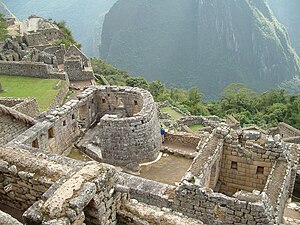Vibration control
In earthquake engineering, vibration control is a set of technical means for decreasing seismic loads and improving seismic performance of building structures.
Types of vibration control devices
All vibration control devices may be classified as passive, active [1] or hybrid.[2] The first kind is the simplest one and, therefore, widespread. Passive control devices represent different types of base isolators and seismic dampers.
Base isolators restrict penetration of potentially damaging seismic waves into a building structure while dampers decrease destructive effect of those waves.
Vibration Control Media
Base isolator being tested at the UCSD Caltrans-SRMD facility
Base-isolated San Francisco City Hall after seismic retrofit
Other websites
References
- ↑ PASSIVE AND ACTIVE VIBRATION ISOLATION SYSTEMS
- ↑ Chu, S.Y.; Soong, T.T.; Reinhorn, A.M. (2005). Active, Hybrid and Semi-Active Structural Control. John Wiley & Sons. ISBN 0470013524.
{{cite book}}: CS1 maint: multiple names: authors list (link)

